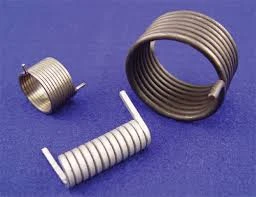
- Mobile Phone
- +8613931874955
- sales@cntcmetal.com
Exploring the Benefits and Applications of Wire Wall Ties in Construction
Understanding Wire Wall Ties Importance, Types, and Applications
Wire wall ties are essential components in the construction and masonry industry, primarily used to create a stable, secure connection between two masonry walls or between masonry and other structural elements. These ties play a critical role in ensuring the integrity and strength of buildings, particularly in regions prone to movement or stress. In this article, we will explore the importance of wire wall ties, the different types available, and their various applications in construction.
The Importance of Wire Wall Ties
One of the primary functions of wire wall ties is to provide lateral support and stability to masonry walls. When buildings experience lateral forces, such as wind pressure or seismic activity, these ties help distribute the load evenly across the structure. This enhances the overall resilience of the building and minimizes the risk of cracking or structural failure.
In addition to providing stability, wire wall ties also help prevent moisture accumulation within the walls. By promoting ventilation between walls, these ties can reduce the potential for mold and mildew growth, contributing to a healthier living environment. Furthermore, wire wall ties assist in maintaining the proper alignment of walls, ensuring that they remain plumb and level over time.
Types of Wire Wall Ties
There are several types of wire wall ties, each designed for specific applications and conditions. The most common types include
1. Corrugated Wall Ties These ties are often used in brick veneer walls. Their corrugated design provides added strength and flexibility, allowing them to accommodate minor movements without compromising the structural integrity of the wall.
2. Vertical Wall Ties Used primarily in cavity wall construction, these ties are installed vertically and connect the two leaves of the wall, ensuring they work together as a single unit. Vertical wall ties typically come in various lengths to suit different wall thicknesses.
wire wall ties

3. Horizontal Wall Ties Similar to vertical ties, horizontal wall ties connect masonry walls or masonry to concrete. They provide anchorage for walls that are subjected to lateral forces, making them crucial in seismic and high-wind areas.
4. Anchor Ties These ties are used to connect a masonry wall to a structural frame, such as a steel or concrete skeleton. Anchor ties ensure that the masonry wall is integrated into the overall design of the building, enhancing stability and safety.
5. Dovetail Ties Often used in engineered walls, dovetail ties have a unique shape that allows them to fit snugly into brick or block units. This design provides excellent resistance to lateral forces.
Applications of Wire Wall Ties
Wire wall ties are utilized in various construction scenarios, including residential, commercial, and industrial projects. In residential construction, they are often found in brick veneer or cavity wall systems, where they help maintain structural integrity and prevent water intrusion. In commercial buildings, wire wall ties are crucial for ensuring the stability of tall structures that experience increased wind loads or seismic activity.
Additionally, maintenance and retrofitting of older buildings often involve the installation of wire wall ties. In structures with masonry deterioration, adding ties can reinforce the walls and prolong the building's lifespan. This is particularly important in historical restorations where maintaining the original appearance while enhancing structural strength is necessary.
Conclusion
Wire wall ties are indispensable in modern construction, providing crucial stability and support to masonry structures. Understanding the types and applications of these ties can help builders and architects design safer, more resilient buildings. As construction techniques and materials continue to evolve, the importance of wire wall ties in ensuring structural integrity will remain paramount, leading to safer and more durable structures for generations to come.
share:
-
Yard Sign Stakes: Reliable Guardians of Outdoor SignsNewsAug.04,2025
-
Wall Ties: Invisible Guardians of Building StabilityNewsAug.04,2025
-
Resilient Web: The Super Guardian Power of Concrete MeshNewsAug.04,2025
-
Masonry Accessories: A versatile assistant on building foundationsNewsAug.04,2025
-
Iron Binding Wire: the 'invisible reinforcement specialist' in the fields of architecture and industryNewsAug.04,2025
-
Dynamic Spring: The diverse functions and excellent performance of Wire Tension SpringNewsAug.04,2025
-
Your Source for Concrete Wall Ties and Masonry AccessoriesNewsJul.10,2025



















